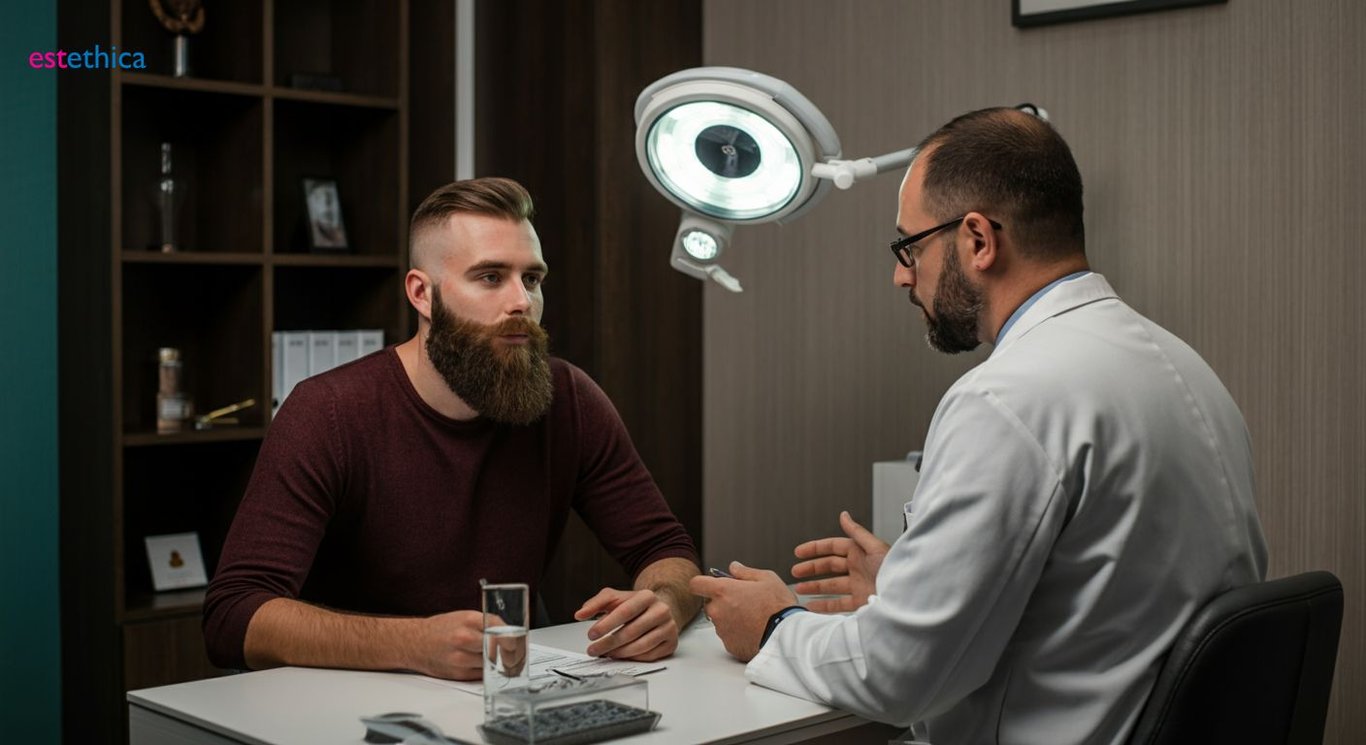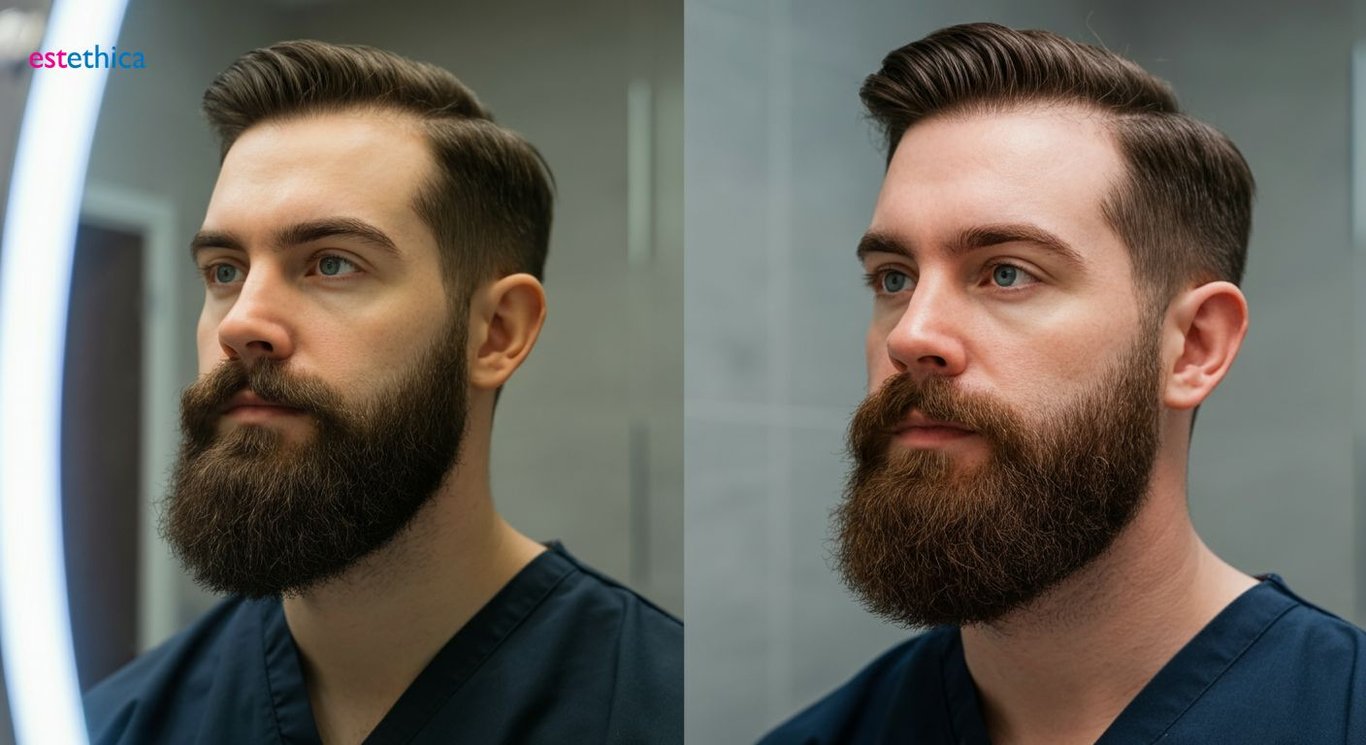Beard Transplant: Achieve the Perfect Facial Hair You Desire!
Transform your look with a seamless beard transplant. Discover techniques, benefits, and aftercare for your ideal facial hair.
In recent years, beard transplant procedures have surged in popularity, offering a promising solution for those seeking fuller, thicker facial hair. Whether you're struggling with patchy facial hair or simply desire a change in your look, understanding the intricacies of beard transplantation can be pivotal. This comprehensive guide will unravel the fundamentals of facial hair transplants, evaluate your suitability for the procedure, explore the advanced techniques used in Fue beard transplants, and provide insights into what you can expect before and after the procedure.
Facial Hair Transplant: Understanding the Fundamentals
Exploring the Basics of Facial Hair Restoration
Facial hair transplant, often regarded as a distinct field from traditional hair transplants, precisely focuses on restoring hair to areas such as the beard, mustache, and sideburns. Utilizing advanced techniques like follicular unit extraction (FUE) and direct hair implantation (DHI), these procedures are tailored to provide results that not only look natural but also complement your facial structure. The facial hair transplant process involves meticulous planning and execution, ensuring that the transplanted hair blends seamlessly with existing hair.
Understanding the nuances of a beard transplant is essential. A skilled beard surgeon carefully assesses factors such as hair density, direction, and texture to achieve optimal aesthetic outcomes. The primary goal of beard restoration is to enhance facial aesthetics while maintaining a natural and balanced appearance. An estimated 65% of men who undergo a facial hair transplant report increased satisfaction with their overall appearance.
Key Considerations for a Facial Hair Transplant
- Initial Consultation: The process begins with a comprehensive evaluation by a beard surgeon to determine candidacy and discuss realistic expectations for the beard hair surgery.
- Hair Graft Extraction: Utilizing either FUE or DHI techniques, individual hair grafts are carefully extracted from the donor area, typically the scalp, to be transplanted into the desired facial region.
- Implantation Process: The extracted hair grafts are meticulously implanted into the recipient sites, ensuring proper angle and orientation to mimic natural hair growth patterns for a fuller beard.
Choosing the right clinic can significantly impact the success of a fue beard transplant. Options like a beard transplant clinic Miami or best beard transplant Los Angeles offer specialized services. Seeing beard implants before and after can help manage expectations.

Beard Restoration: Is a Beard Transplant Right for You?
Determining Candidacy for a Beard Transplant
Deciding whether a beard transplant is the right choice involves several key considerations. Ideal candidates typically possess healthy donor areas, usually on the scalp, from which hair grafts can be extracted. A successful facial hair transplant hinges on the availability of sufficient donor hair and the ability of the recipient area to support new growth. Consulting with a qualified beard surgeon is crucial to assess your specific situation and determine the feasibility of the procedure. A thorough evaluation will help ensure realistic expectations and a positive outcome from yourbeard restoration.
Realistic expectations are paramount. The outcome of a beard transplant depends on individual factors such as hair type, skin condition, and overall health. A skilled beard surgeon can provide a clear understanding of what can be realistically achieved. One should be wary of overly optimistic claims and instead focus on achieving a natural and aesthetically pleasing result. With a fue beard transplant, the artistry and precision is what will increase your facial aesthetics.
Essential Factors for Beard Transplant Candidates
- Sufficient Donor Hair: Adequate hair density in the donor area is vital to ensure enough hair grafts can be harvested for a successful transplant.
- Good Overall Health: Candidates should be in good general health to minimize the risk of complications and promote optimal healing after the beard hair surgery.
- Realistic Expectations: Understanding the limitations and potential outcomes of the procedure is crucial for satisfaction with the final results.

FUE Beard Transplant: The Methods and Techniques
Understanding the FUE Technique for Beard Transplants
The FUE beard transplant method is celebrated for its minimally invasive approach and natural-looking results. Follicular Unit Extraction involves extracting individual hair grafts from a donor area, typically the scalp, and transplanting them to the beard area. This precise technique minimizes scarring, offering a significant advantage over older strip harvesting methods. The skill of the beard surgeon plays a crucial role in ensuring the grafts are placed at the correct angle and density, which is essential for achieving a natural and full beard appearance.
Advancements in technology, such as the use of safir blades, have further refined the FUE technique. These blades allow for smaller and more precise incisions, which not only reduces trauma to the skin but also promotes faster healing. The result is a beard restoration that seamlessly blends with existing facial hair, enhancing facial aesthetics. The meticulous approach of FUE makes it a popular choice for those seeking a beard transplant with minimal downtime and maximum aesthetic impact. The procedure of FUE beard transplant can be performed without the typical linearity of traditional methods.
Key Steps in the FUE Beard Transplant Process
- Extraction: Individual follicular units are meticulously extracted from the donor area using specialized tools, preserving the integrity of each hair graft.
- Preparation: The extracted grafts are carefully prepared under magnification to ensure they are in optimal condition for transplantation.
- Implantation: The prepared grafts are then implanted into the recipient area, with precise attention to angle and depth to replicate natural beard growth.
If you're considering a fue beard transplant, remember that after care in winter is different than in summer

Beard Transplant: Before and After – What to Expect
Navigating the Healing Process After a Beard Transplant
After undergoing a beard transplant, understanding the recovery timeline is crucial. Initially, patients can expect some redness and swelling in the treated area. These are normal and temporary effects that typically subside within a few days. Following the post-operative guidelines provided by your beard surgeon is essential to ensure optimal healing and minimize any potential complications. Adhering to these guidelines helps in achieving the best possible results from your facial hair transplant.
The transplanted hair grafts will initially shed, which is a natural part of the process. New hair growth will commence several months post-procedure, leading to a gradual increase in beard density. Factors influencing the final outcome include the skill of the beard surgeon, the technique used (such as fue beard transplant or DHI), and individual healing capabilities. Many seek beard restoration to enhance their facial aesthetics to regain confidence.
Key Milestones in Beard Transplant Recovery
- Initial Days: Expect redness and swelling, managing it with prescribed medications and cold compresses as directed by your beard surgeon.
- First Weeks: The transplanted hair will shed, making way for new growth to begin in the coming months.
- Several Months: Noticeable hair growth will occur, gradually filling in the beard area and achieving a fuller, more natural look.
Precision FUE Beard Transplants for Natural-Looking Facial Hair Restoration
Meticulous Graft Placement for Fuller, More Natural Beards at estethica
Frequently Asked Questions
What is a beard transplant and how does it work?
Am I a good candidate for beard restoration?
What are the benefits of the FUE beard transplant technique?
What should I expect during the recovery period after a beard transplant?
Achieve your aesthetic goals with estethica's expert guidance.
📞 Call Now for a Free Consultation!